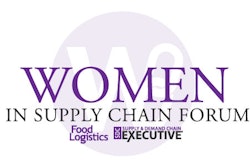
Despite the mixed economic indicators, hiring is increasing across all industries and the transportation and warehousing industry is no different, adding 24,000 jobs in May alone. However, increased demand for labor has only agitated the already strained labor shortage in trucking. Carriers of all kinds are feeling the squeeze as they struggle to fill in-demand positions like drivers, mechanics and technicians. Whether an organization is a local, national or private carrier, many companies are struggling to get applicants engaged at the top of the funnel and start the application process, leaving a gap in their ability to hire altogether.
Going Beyond Pay: Developing an EVP
Such high demand for hard-to-fill positions has put pressure on businesses to raise wages. And, while the average hourly earnings grew 4.3% in May to help attract talent and meet rising inflation, pay is just a commodity and doesn’t often have a long term effect of retaining talent. The most important factors when hiring in the trucking industry are making sure the prospective employee is up for the demands of the position but also shares the company’s values and feels a part of the overall mission.
A lot of these positions, especially drivers, have difficult conditions that can have a profound impact on the employee’s home life. Companies need to make a concerted effort to establish and protect a healthy work-life balance, which should then be translated clearly in the organization’s employee value proposition (EVP). An EVP lays out everything the company offers to an employee that might influence them to join the team and is usually part of a broader branding strategy. While a clear and enticing EVP can help attract talent, in the end, it’s the authentic connection with the employer that keeps them at the company.
Speed Bumps in Hiring
While the trucking industry’s labor shortage is largely due to the lack of available talent interested in this sector, the aging workforce is also a key factor to note. Organizations can’t have a one-size-fits all strategy to advertise their job opportunities. Given their urgent need to fulfill current business demands, there is a need to recruit savvy and experienced drivers but it’s also critical to engage and encourage younger talent to join their organization or even get started in the industry. While many companies are using a diversified array of tactics and platforms to recruit any way they can, it can be expensive and crowded for companies to use industry publications and traditional tools like job boards to attract talent.
Trucking companies need to make sure they don’t put their recruiting strategy on cruise control and hope for the best. Smart carriers are going to find ways to test and learn about how their jobs and employer brand perform across all advertising channels. Making sure organizations don’t get complacent is critical to building or retaining a competitive edge when it comes to having a sophisticated recruiting function at your trucking company. Many people consider recruiting a cost center, but attracting and retaining talent is truly tied to your ability to generate revenue. When you are down drivers, you are down.
Second, and probably the most overlooked barrier - a company’s applicant tracking system (ATS) and the processes around them can often be outdated and cumbersome. An ATS is a very common and usually critical software program used to track candidates from the time of application all the way through the interview and hiring process. The ATS can sometimes have a dated interface and an unusually long application process with a cumbersome number of steps and clicks. In addition, the recruiting teams at companies are busy and understaffed, and the hiring teams may be slow to respond to applicants, prolonging the process. These delays can both contribute to a poor candidate experience and burn bridges with interested applicants who took the time to apply and may be considering competitors. If a company spends a bunch of money advertising jobs and building their employer brand, the last thing they should do is leave interested applicants waiting at the altar.
Meeting Prospects Where They Are
Currently, the trucking industry is male-dominated and has an average age of late 40s. However, it would behoove the industry to target broader demographics in order to expand the available talent pool. To do this, hiring teams must strategically meet these broader demographics where they are. For example, older candidates tend to be on more traditional sites like the job boards or trade publication sites. However, younger audiences are trending away from traditional platforms and towards social platforms. For example, innovative organizations have been advertising jobs on TikTok, Snapchat and Spotify. YouTube has also become a more popular platform when looking to advertise jobs, targeting those looking at trucking content, engine repair content and other hobby content.
The recruitment advertising industry is constantly evolving to meet candidates where they are. In fact, recruitment advertising is only a few years behind consumer advertising. One of the hottest advertising channels right now is connected TV, so more companies are reaching prospective employees on Hulu, YouTubeTV and other streaming platforms. Using engaging video content and leveraging the ability to target in key local markets makes this an attractive solution for trucking organizations to engage talent when and where they need to fill positions.
A Last Bit of Advice
While the recruitment advertising space continues to evolve, trucking companies will need to keep up with new trends in order to compete for the talent available in the space and attract people from other industries. However, your recruitment advertising efforts mean nothing if your talent acquisition teams can’t successfully engage in a timely manner and move the right candidates through the hiring and onboarding process.
For this reason, it’s important companies explicitly allocate resources to recruiting and onboarding, even if they are short-staffed.
Not only is recruiting difficult at the moment, but it will continue to be a challenge in the foreseeable future. Knowing your organization and what you promise to employees will help you manage the challenges of employee turnover, a challenge that has plagued some trucking industry players over the past few years. Understanding that retention starts with the first contact with an employer, it’s important for executives to be honest with themselves and be aware of their own application process. By putting themselves in the position of a candidate, they can see, first-hand, the candidate’s experience with the company. Walking in their shoes for a few minutes will help you appreciate what you are asking them and identify and improve pain points you might not have been aware of. It will also allow you to warmly welcome new employees into your program.



















